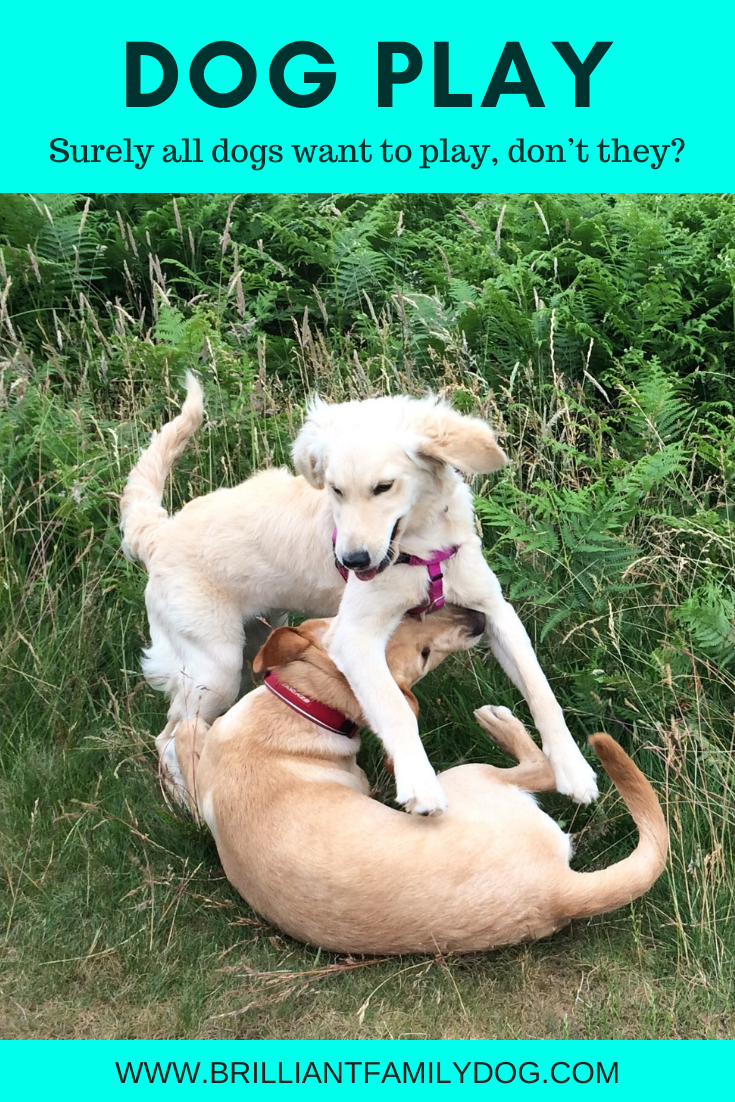This question usually comes as a bit of a whine. People take it personally!
Now, if the biting is serious, intentional, does damage, then you need to seek professional help - “boots on the ground” as a wise colleague puts it. You need a force-free trainer to see just what’s going on, and help you make the necessary changes to make sure everyone is safe. That includes your dog. A dog who bites and does damage is definitely not safe - his life is at risk!
But let’s assume you have a dog who is enthusiastically taking lumps out of your jumper sleeves, grabbing your hands, tugging on your trousers or socks - but without any malicious intent. This is misdirected excitement.
You don’t need to take it personally! He’s not trying to hurt you. He just wants to play, and you haven’t yet taught him how.
This dog simply doesn’t know how to play according to our rules!
Puppies learn in the litter in weeks 6-8 that playing rough loses you playmates. The other pups will shun a painful biter until he mends his ways. This is the reason those two weeks are SO important!
And it’s why you should never take a puppy less than 8 weeks old.
It’s the most labour-intensive time for a breeder, and this is where genuine breeders earn their money.
“Greeders”, puppy-farmers, people who couldn’t be bothered and whose bitch was “caught”, are not going to want to spend time with this additional work. But it’s vital.
It’s when your puppy learns bite inhibition.
Bite inhibition
This is what we call a soft mouth. Your dog understands how to inhibit his bite so he can adapt it to what the teeth are touching.
Rule 1: Dogs’ teeth never touch human skin.
And they learn this very fast when they are young enough to take the lesson quickly, at a few weeks old.
They can still learn it when they’re older, of course! But it takes a little more sustained input from you.
Tug
Tug is the best game ever for teaching this. Your dog can enthusiastically grab, chomp, tug, and play with you, with perfect control of his gnashers.
He moves from high arousal to thoughtful control.
In the Brilliant Family Dog Academy we teach people just how to achieve this happy state! And it’s all done without any NOOOs or nose-taps or any other form of punishment.
It’s a game you can both enjoy - for life.
In this image you can see 9-week-old Coco waiting for the cue to start play - and then his vigorous tugging in the image at the top of the post!
Puppy Nipping
People write for advice with their pup’s nipping. They often say, “I expected him to bite, but I thought it would stop now he’s 6 months old …”
There are three fallacies here -
Any biting should stop within his first week with you.
Such rewarding fun (you dance and squawk and get excited) is not going to go away on its own: you have to train your dog how you want him to play.
AND - what you expect is what you get!
That goes for everything, in dog training - and in life. If you expect him to bite you, that’s just what will happen.
So follow the guidance in this post:
https://www.brilliantfamilydog.com/blog/10-ways-to-stop-puppy-biting
Whatever age your dog is, you can change this!
For more about the Brilliant Family Dog Academy I mentioned above, watch our free Workshop and learn all about how you can transform your Li’l Nipper into your Brilliant Family Dog!







